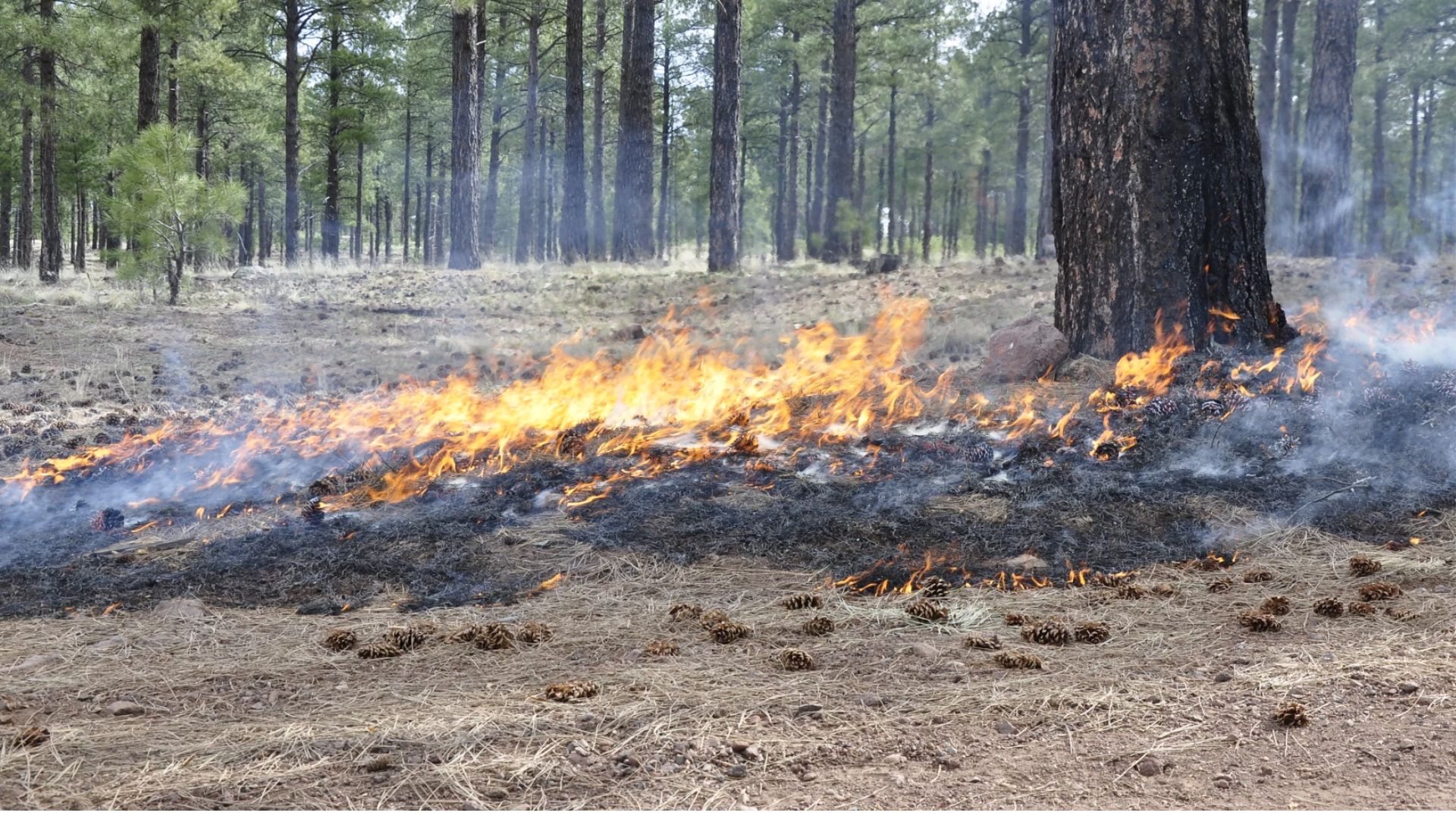Lightning-caused Wildfire Produces Smoke In Northern Arizona
Lightning caused wildfire produce smoke in northern arizona - Smoke may be seen in certain areas of northern Arizona coming from two wildfires in the Coconino National Forest that were started by lightning.

David Mitchell
Sep 29, 2023
Smoke may be seen in certain areas of northern Arizona coming from two wildfires in the Coconino National Forest that were started by lightning.
Crews planned to start firing operations today on a 40-acre fire burning along Highway 89A southwest of Kachina Village. The fire is currently burning at a low-to-moderate pace.
Officials predict that when management utilizes the fire for ecological advantage, it will expand to a size of around 2,100 acres.
Along 89A and Oak Creek Canyon, as well as from Flagstaff and Sedona, smoke will be visible.
No buildings are in danger. Additionally, a wildfire that has been quietly burning close to the C.C. Cragin Reservoir for about two weeks will be the site of firing operations on Wednesday and Thursday. The Blue Ridge neighborhood and Highway 87 may be affected by smoke.
Understanding Lightning-Caused Wildfires
Lightning strikes can lead to wildfires when they hit dry vegetation. These fires are often referred to as "wildfires" due to their uncontrolled nature, and in the dry, arid conditions of Northern Arizona, they can spread rapidly.
The Consequences - Smoke And Its Widespread Impact
Once a lightning-caused wildfire ignites, it can quickly spiral out of control, leaving behind a trail of destruction and, perhaps most notably, a thick blanket of smoke that engulfs the region. The consequences of this smoke are profound, affecting various aspects of life in Northern Arizona.
Air Quality Concerns
As wildfires rage, they release vast amounts of smoke into the atmosphere. This smoke contains fine particulate matter, which poses a severe risk to respiratory health, especially for vulnerable populations such as the elderly and children.
Economic Implications
The smoke's impact extends beyond health concerns. It can disrupt daily life, including outdoor activities, tourism, and agriculture. Reduced visibility from smoke can also lead to accidents on roadways, impacting transportation and commerce.
Fighting The Blaze - The Heroic Efforts Of Firefighters
In the face of these destructive wildfires, there is a dedicated group of individuals who stand on the front lines, risking their lives to protect the people and land of Northern Arizona.
The Unsung Heroes - Wildfire FirefightersWildfire firefighters are the backbone of efforts to contain and extinguish lightning-caused wildfires. They employ various techniques, including controlled burns, water drops, and firebreaks, to limit the fires' spread.
Mitigation Strategies - Preparing For The Inevitable
Given the recurring nature of lightning-caused wildfires, there are ongoing efforts to mitigate their impact and reduce the risks they pose to Northern Arizona.
Firebreaks And Controlled Burns
Creating firebreaks and conducting controlled burns are essential strategies to limit the spread of wildfires. These tactics remove dry vegetation that can fuel the fires and provide barriers to contain them.
Advanced Firefighting Technologies
Advancements in firefighting technology, such as drones equipped with thermal imaging cameras and fire-resistant materials, have enhanced our ability to monitor and combat wildfires effectively.
The Resilience Of Nature And Communities
While lightning-caused wildfires are undoubtedly destructive, they also serve as a testament to the resilience of both nature and the communities that call Northern Arizona home.
Ecosystem Regeneration
After a wildfire, there is an opportunity for ecosystem regeneration. Some plants and trees have adapted to thrive after a fire, and this renewal is a natural part of the cycle in Northern Arizona.
Community Support And Preparedness
Communities in Northern Arizona have become increasingly proactive in preparing for wildfire seasons. Measures such as creating evacuation plans and improving communication during emergencies have become vital.